There are several great attractions nearby Flagstaff that are worth exploring. One of these is the Meteor Crater Natural Landmark, often referred to as the Barringer Crater, along with its associated Barringer Space Museum, So, how far is Meteor Crater from Flagstaff, Arizona? The Meteor Crater is only about 43 miles east of Flagstaff. So, being that close, go ahead, make a road trip, and visit the Meteor Crater and Barringer Space Museum. It is quite a site to see!
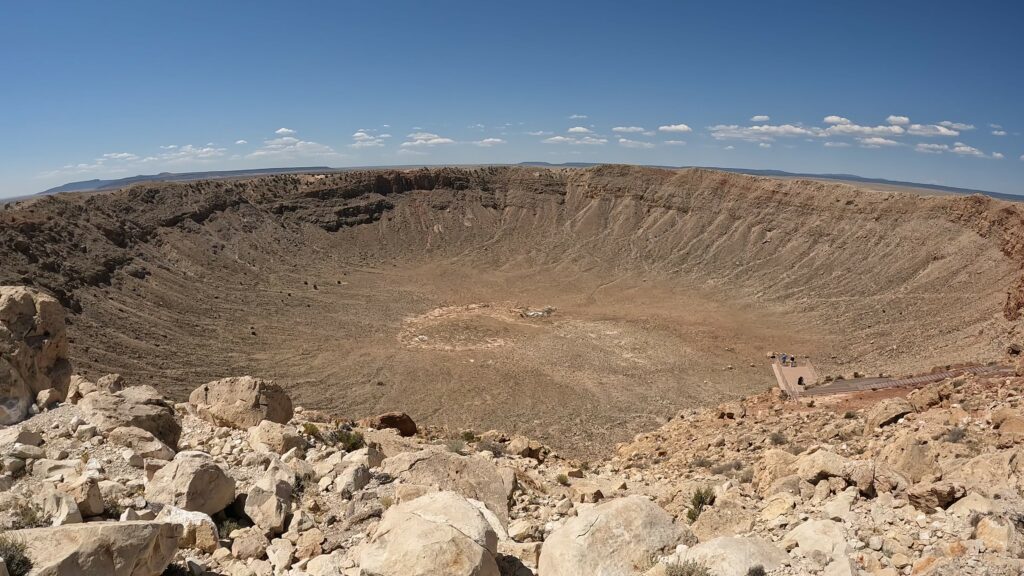
The Meteor Crater is a remarkable natural landmark located in Arizona, USA. With its rich history and immense size, it has become a popular destination for science enthusiasts, geology lovers, and curious travelers alike. In this article, we will explore the geographical context of Meteor Crater and Flagstaff, provide information on the distance between the two, estimate travel time, highlight nearby attractions, offer practical tips, and ultimately inspire you to embark on an unforgettable journey to this awe-inspiring marvel.
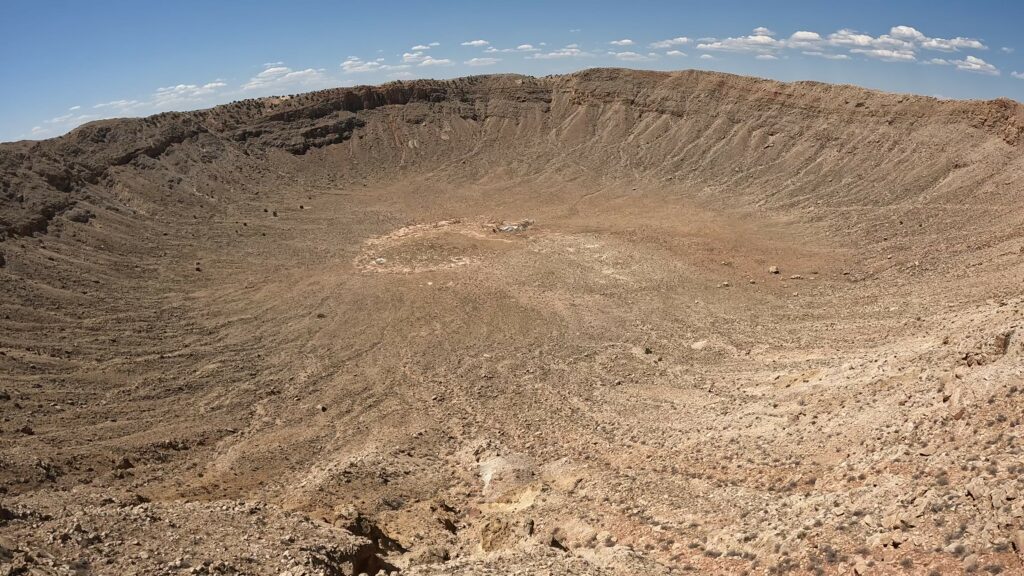
What is the Meteor Crater Natural Landmark?
A huge iron-nickel meteorite plunged into the North Arizona landscape about 50,000 years ago. This meteorite is estimated to be 150 feet wide and weighs several thousand tons. It broke apart upon impact as it hit the ground with a force 150 times greater than an atomic bomb.
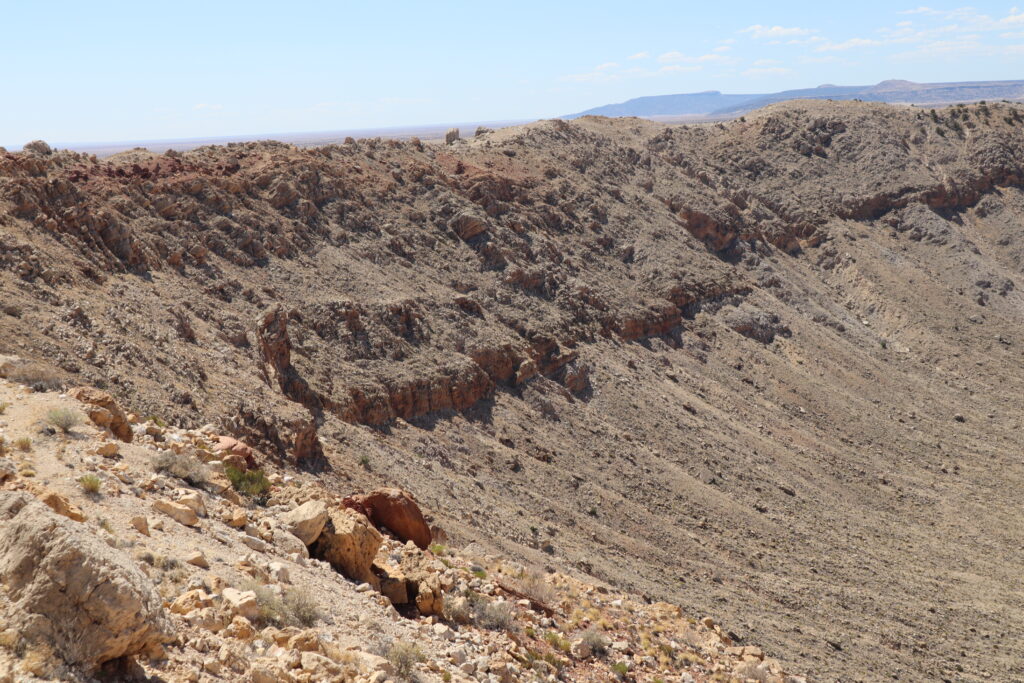
The crater measures 560 feet deep, almost a mile wide, and has a rim of the crater that rises 148 feet above the surrounding plains. It sits at an elevation of 5,640 feet above sea level. The bottom of the crater is filled with 700 feet plus rubble lying above the crater bedrock.
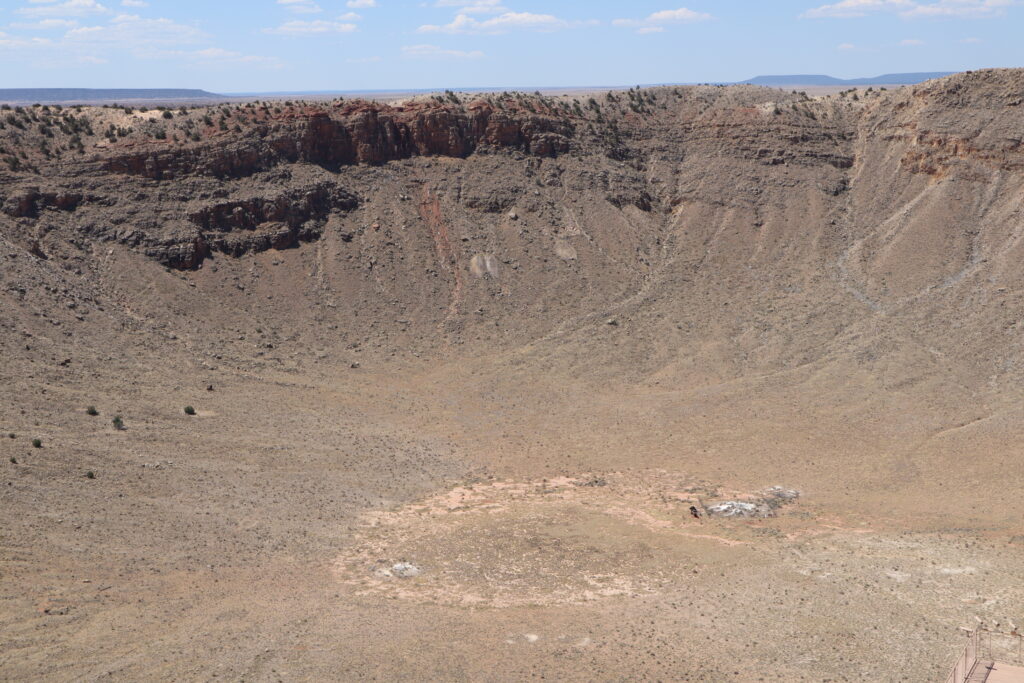
Interactive Discovery Center and Space Museum
The Discovery Center and Space Museum provides visitors with educational and hands-on interactive experiences to better understand the space science behind meteors. It has specific content around the following:
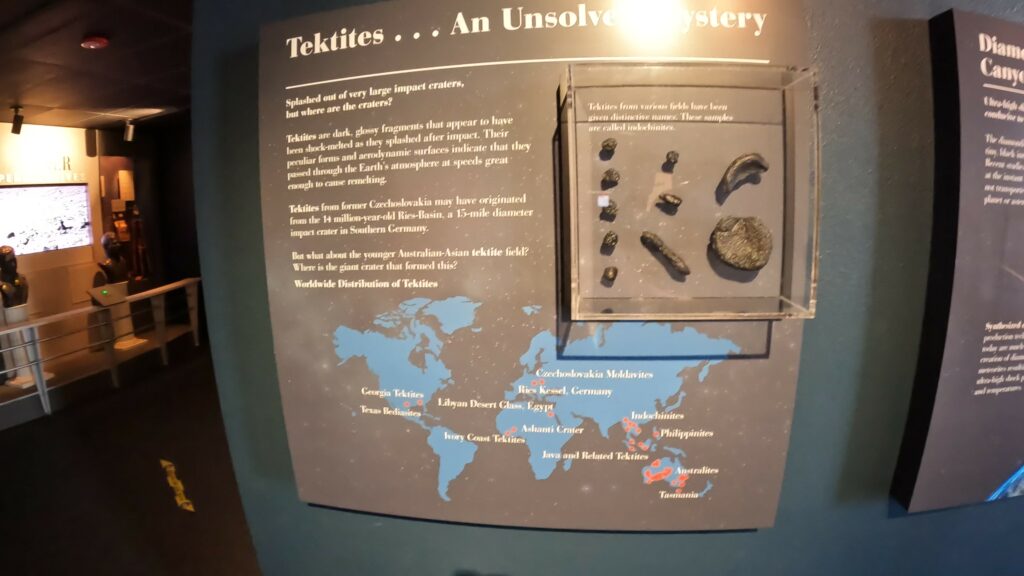
History of the Meteor Crater
A variety of exhibits provides visitors with a historical review of Daniel M. Barringer and how the Meteor Crater was found, how the meteor impacted the surrounding landscape, the devastation that followed, along how instrumental this meteor crater played in earth and science studies going into the future. The exhibits also delve into other meteorite impact sites from around the world.
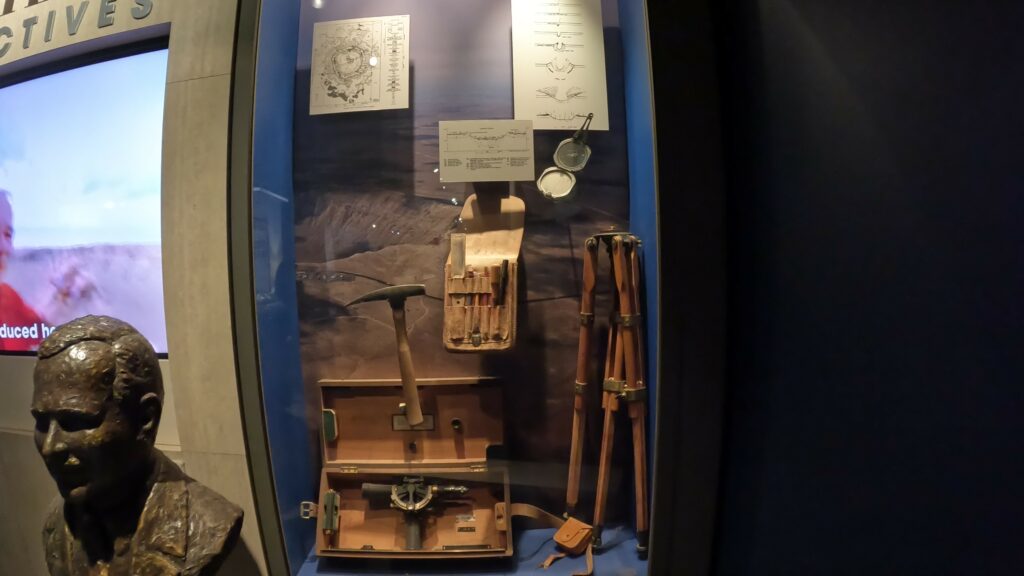
You can see and touch the massive 1,406 lb. Holsinger Meteorite which is the largest specimen ever found at the Meteor Crater. You can also find out how to tell the difference between asteroids, comets, meteors, meteoroids, and meteorites. It also discusses the ten youngest and largest craters on Earth.
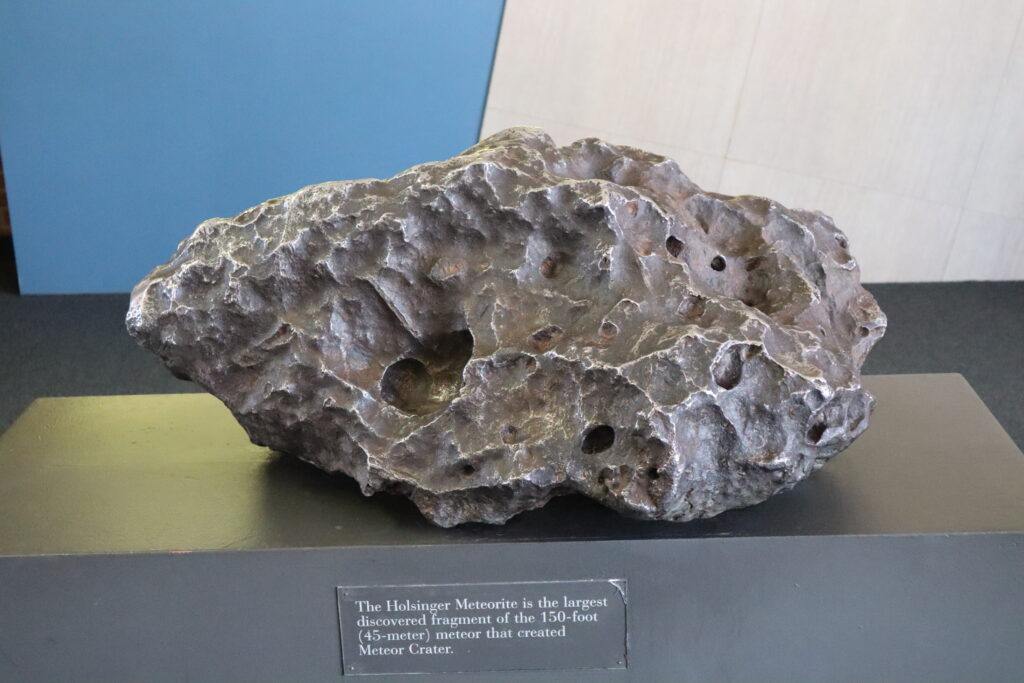
An Exciting Journey Into Space
Step into the movie theatre where Commander Perseus and First Office Jackie Lopez lead you on an incredible space flight. You can fly down into the crater and visit an asteroid on a collision course with Earth. This is a one-of-a-kind immersive 4-D movie experience aboard the STS Barringer.
NASA Apollo Astronauts Training
NASA and the Meteor Crater have a long history of collaboration. In the 1960s, NASA astronauts used the crater’s unique and rugged terrain to help them train for what they expect to see on the moon. The crater is one of the few places on Earth that is an exposed, and still fully intact, meteorite impact site that would emulate the surface of the moon.
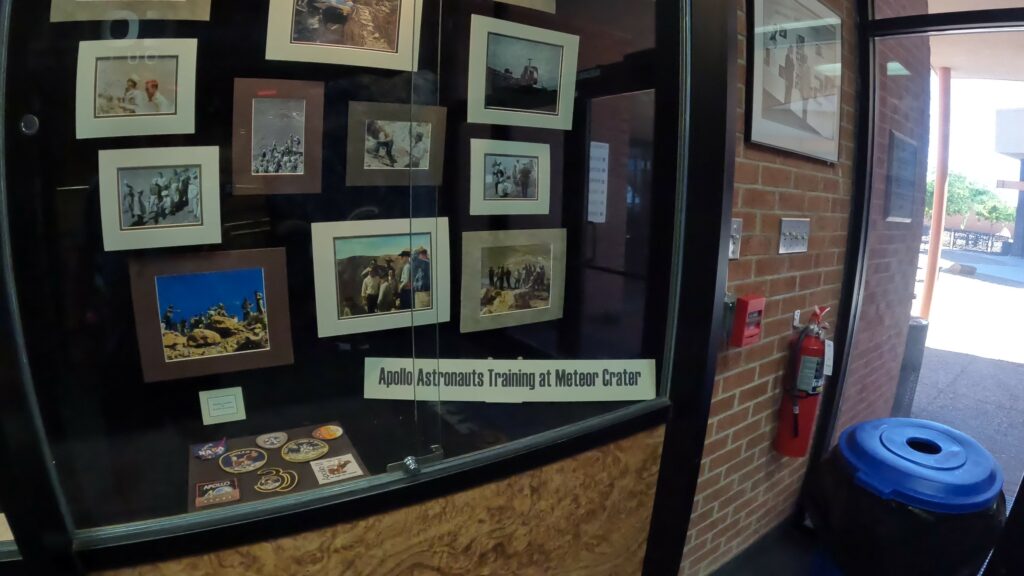
Before Neil Armstrong made that giant leap with his famous moonwalk on July 20, 1969, the three Apollo 11 astronauts — Armstrong, Buzz Aldrin, and Michael Collins, took smaller steps for mankind, using Meteor Crater as their key training site.
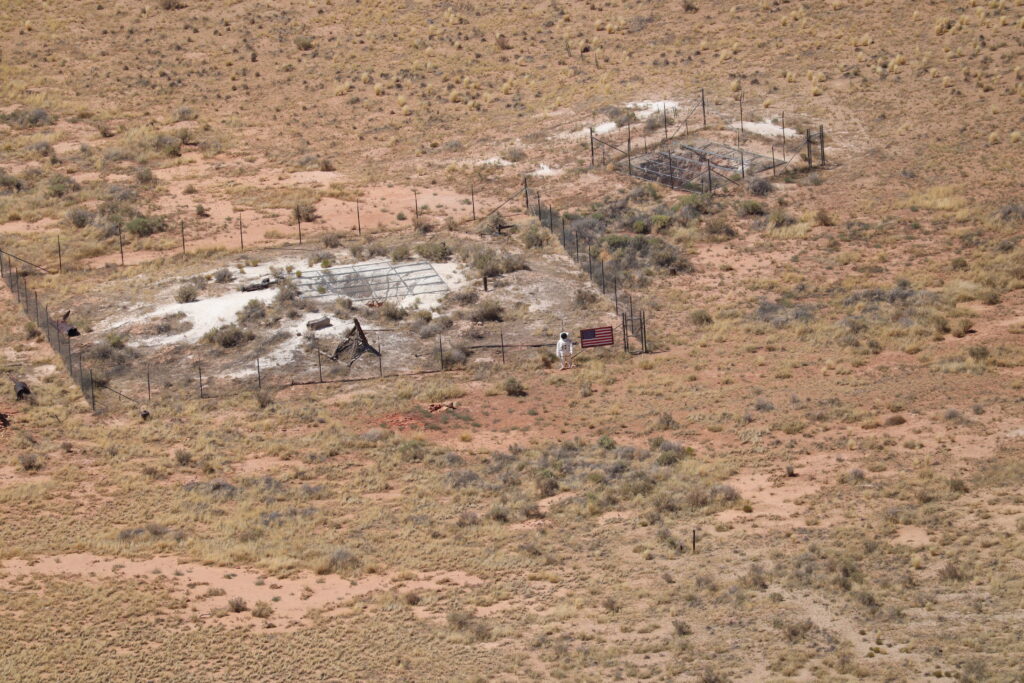
NASA provided the Meteor Crater with one of the Apollo 11 Space Capsules for display outside the Discovery Center.
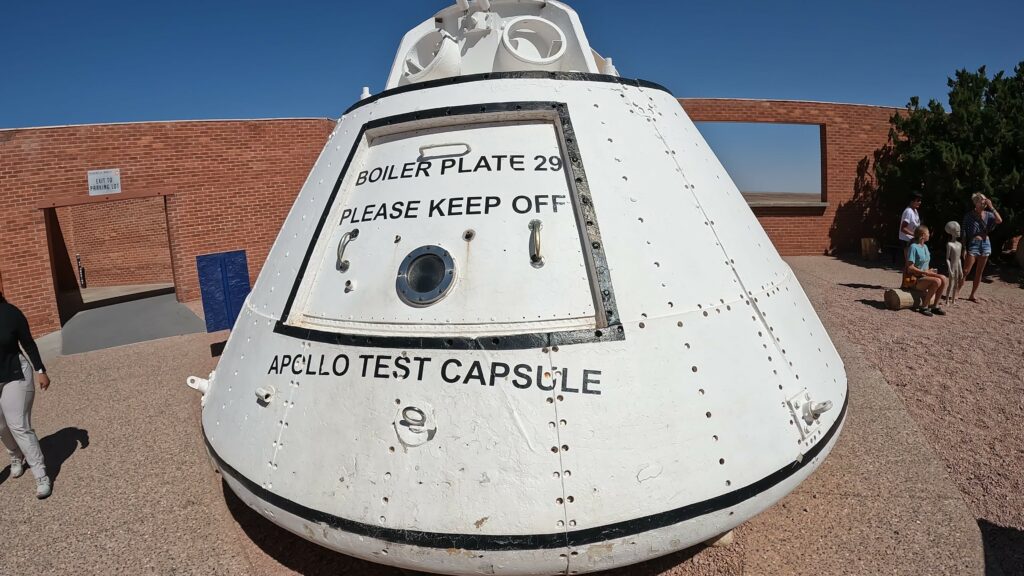
Barringer Crater Company
The Barringer Crater Company is a family-owned enterprise dedicated to the preservation and promotion of the Barringer Meteorite Crater, located near Flagstaff, Arizona.
Founded by D. Moreau Barringer in 1903, the Barringer Crater Company continues to promote its founder’s abiding interest in the events surrounding the creation of the Crater. Daniel M. Barringer’s descendants, now in their fourth generation, own and operate the company under the same guiding principles that he so strongly advocated. In keeping with his wishes, the company operates as a privately held business, with each of the eight branches of the Barringer family represented on the board of directors.
How to View the Crater
Four Lookouts
From inside the air-conditioned comfort of the Discovery Center take in an incredible view of the Crater.
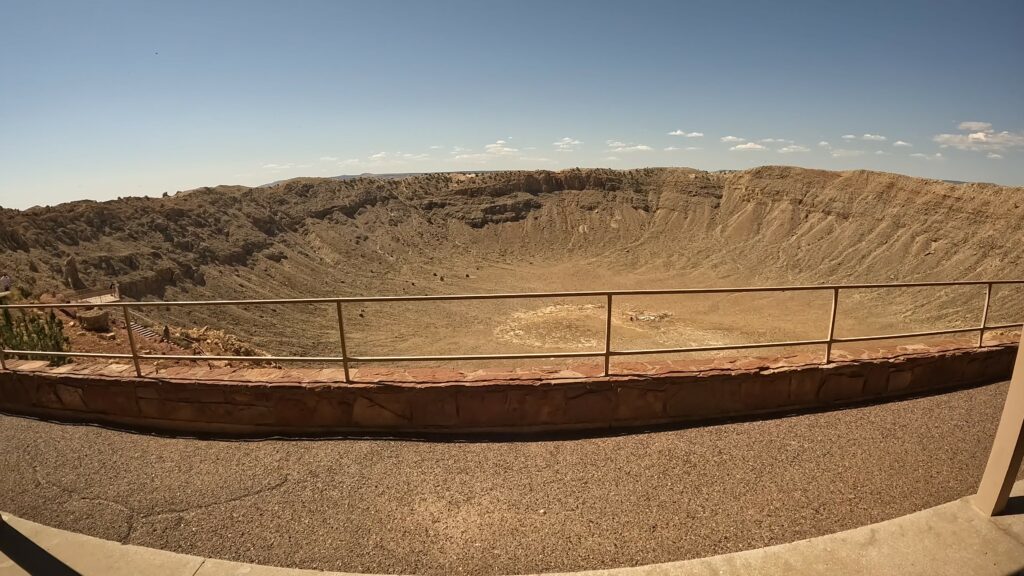
The first outdoor observation area is immediately behind the Discovery Center. The second overlook, Moon Mountain, is the highest observation area. The Lower Ramada is the lowest overlook.
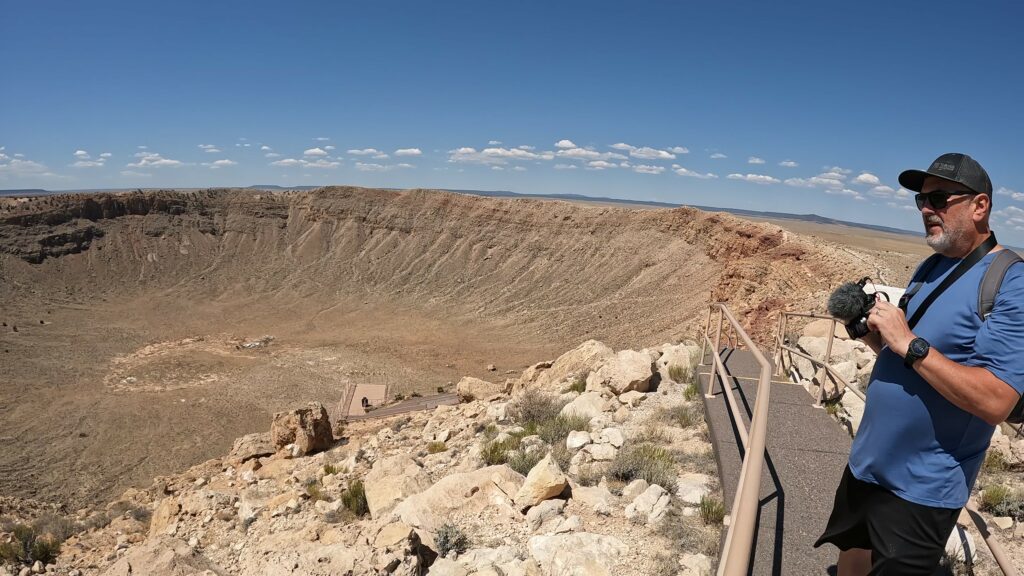
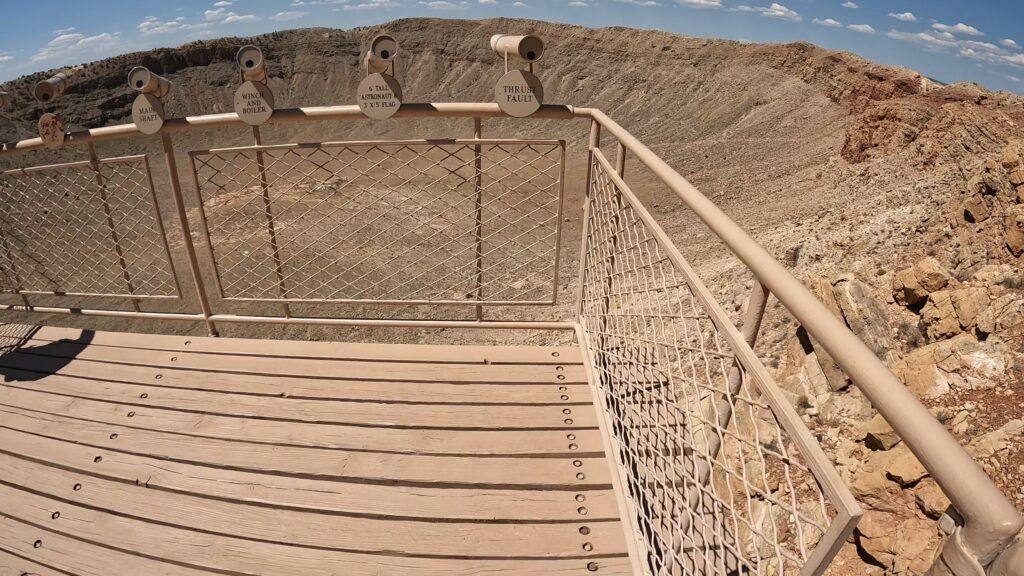
There are benches for you to sit while waiting or catching a bit of rest afterward ascending or descending the lookout stairs. The overlook sites have several fixed telescopes for you to look at designated items of interest.
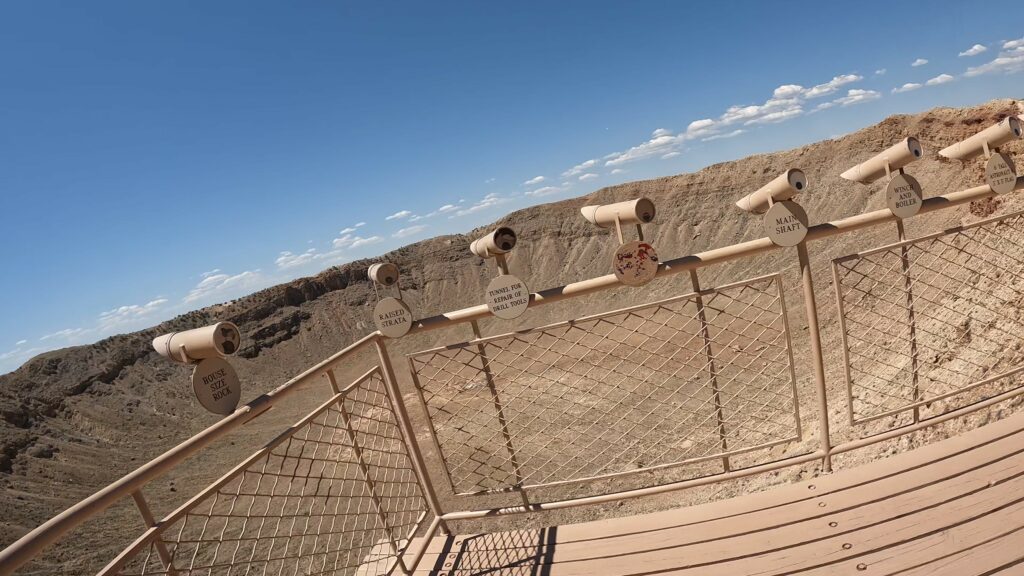
Walk on the Edge with the Experts Tour
The facility also offers a guided rim tour but we didn’t go on it. The Tour Guides retell the story of the meteor’s crash in this location and the geologic impact caused by this rare event. This is your chance to walk on the crater rim of the best-preserved meteorite impact site on Earth. It’s an easy hike and this guided tour will give you a great perspective on how the earth was forever changed after impact.
Practical Tips
Admission Fees and Operating Hours
It’s important to note the admission fees and opening hours of Meteor Crater. As of this writing, the entrance fee for adults is $27, with discounts available for seniors, military personnel, and children. The site is open daily from 8:00 AM to 5:00 PM, allowing you ample time to explore and enjoy the crater’s beauty. However, keep in mind that opening hours may vary, so it’s always a good idea to double-check before your visit.
Packing Essentials and Safety Precautions
To make the most of your trip, pack some essential items and take necessary safety precautions. Comfortable walking shoes are a must, as you’ll be traversing uneven terrain. Don’t forget to bring sunscreen, a hat, and plenty of water, especially during the warmer months. It’s also a good idea to have a camera on hand to capture the breathtaking views. Additionally, obey all safety signs and guidelines to ensure a secure visit for yourself and others.
Best Time to Visit and Ideal Duration of Stay
The best time to visit Meteor Crater is during the spring or fall when temperatures are mild and the weather is generally pleasant. Summers can be hot, so visiting early in the morning or later in the day is advisable. The ideal duration of your stay depends on your level of interest and exploration. If you plan to explore the visitor center, walk the Rim trail, and take in the sights, allocating a few hours should be sufficient.
Where is the Meteor Crater Natural Landmark Located?
The Meteor Crater is located about 43 mi east of Flagstaff and 26 mi west of Winslow in the desert of northern Arizona, United States. Most of the trip would be on I-40 so should allow you to get to the Meteor Crater site in 45 minutes or so.
You will want to take the I-40 exit 233 to Meteor Crater Road.
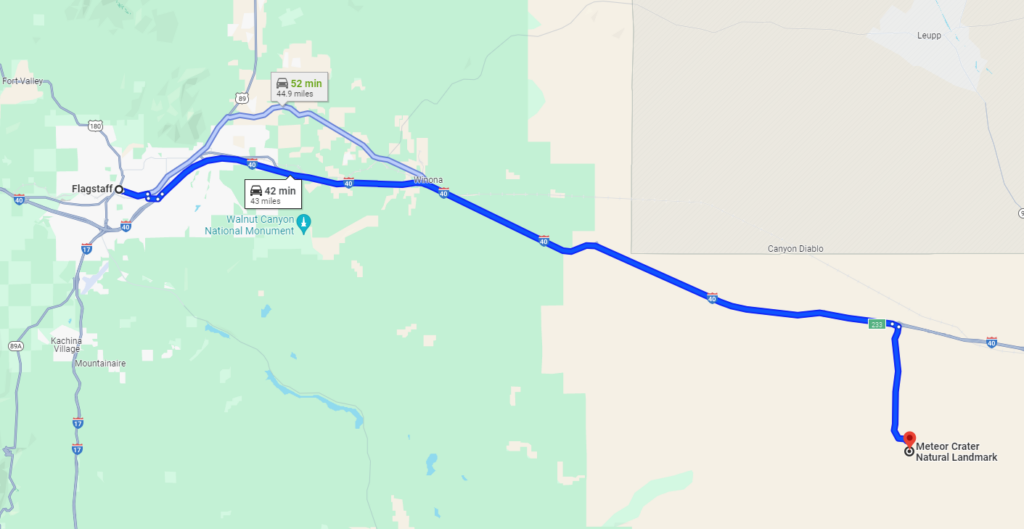
Nearby Attractions
As mentioned above, there are many nice attractions near Flagstaff. If heading to the Meteor Crater and Barringer Museum, consider exploring posts I have on them as well:
East (I-40)
Walnut Canyon National Monument
Two Guns Graffiti Gas Station and KOA
Two Guns Apache Death Cave, Pueblo Ruins, and the old Route 66 Diablo Bridge
Winslow, AZ: Standin’ On the Corner and 9/11 Remembrance Park
Holbrook, AZ: Old Route 66 Town
Petrified Forest National Park
North (Hwy-89)
Sunset Crater Volcano National Monument
Abandoned Anasazi Inn Gray Mountain
Conclusion
As we conclude our exploration of Meteor Crater’s proximity to Flagstaff, we hope this article has provided valuable insights and useful information for planning your next road trip. Meteor Crater stands as a testament to the incredible forces of nature and offers a unique opportunity to witness the impact of a meteorite firsthand. So pack your bags, prepare for an incredible journey, and get ready to be astounded by the sheer magnitude and beauty of this extraordinary natural wonder.
If you like this content, check out all our other videos covering attractions near Flagstaff, AZ, including the Two Guns Graffiti Gas Station and KOA, the Two Guns Apache Death Cave, Walnut Canyon National Monument, and the Petrified Forest National Park. Check out all our other Arizona trip videos that we have on Travel with D and E.
Post a comment with your experience at the Meteor Crater Natural Landmark.
Thanks for watching and as always we will see you in the next video.

Leave a Reply